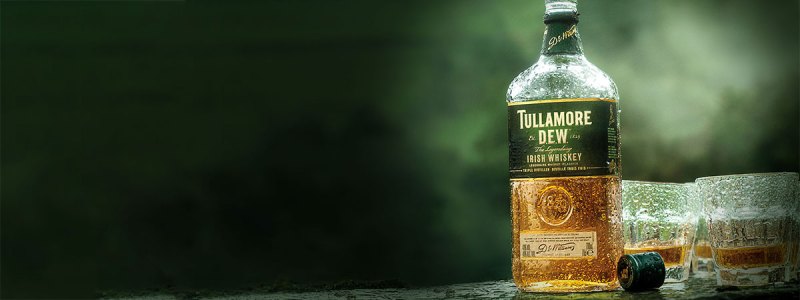
Today, we’re going to look at blended Irish whiskey, specifically Tullamore D.E.W.
A Brief History of Tullamore D.E.W.
Tullamore D.E.W. was first created by Daniel E. Williams (hence D.E.W.) in 1829 in Tullamore, County Offaly, Ireland. In 1953, the brand was sold. The following year, the distillery was closed down, at which point Tullamore began production at the New Midleton Distillery, located in County Cork, Ireland. In 2014, Tullamore opened a new, state-of-the-art distillery in Tullamore, bringing the brand’s whiskey production back to its roots.
Now back to the whiskey.
For a spirit to be called a blended Irish whiskey, it must contain some amount of at least two of the three different types of Irish whiskeys—pot still, malt, and grain.
Tullamore is a triple-distilled, triple-blend whiskey that utilizes all three types of Irish whiskey. To add to this power of three, Tullamore is triple cask-matured, using traditional, ex-bourbon, and ex-sherry casks.
Irish Whiskey Types
Pot Still Whiskey – Made from a mash mixture of malted and unmalted barley. This whiskey will give spicy, peppery characteristics to the blended whiskey as well as a creamy mouthfeel.
Malt Whiskey – Made from a mash that uses malted grain, usually barley unless otherwise noted. With malt whiskey, you’re going to get citrus and other fruity notes, such as orange and green apple.
Grain Whiskey – Made from grains other than barley (maize, rye, or wheat, usually). Light, sweet, and delicate, grain whiskey will deliver cereal characteristics to a blended whiskey.
Once a distillery decides which of the two (or all three) that they will be using, the whiskies are then blended together to yield the desired taste. More pot still, obviously, will give the final product a spicier flavor, while more malt or grain will skew the palate in the other ways stated above.
For example, Tullamore D.E.W. Original has a light, sweet nose that leads to sweet fruit and a bit of toasted wood which terminates in a buttery, mellow finish. In contrast, Tullamore D.E.W. Phoenix, a special edition whiskey created to commemorate a 1785 hot air balloon accident in Tullamore, is much spicier (and hotter, at 55% ABV compared to Original’s 40%), which would lead one to believe that there is more pot still whiskey in the ratio than you would find in Original.
While there are not many Irish distilleries (as of 2015, only thirteen were open), the category is growing, with another half dozen or so in planning and development stages, meaning pretty soon, you’re going to be seeing more Irish whiskey—and more blended Irish whiskey—on the shelves. And if the Tullamore line of whiskeys is any indication, you’re going to want to try them all.



